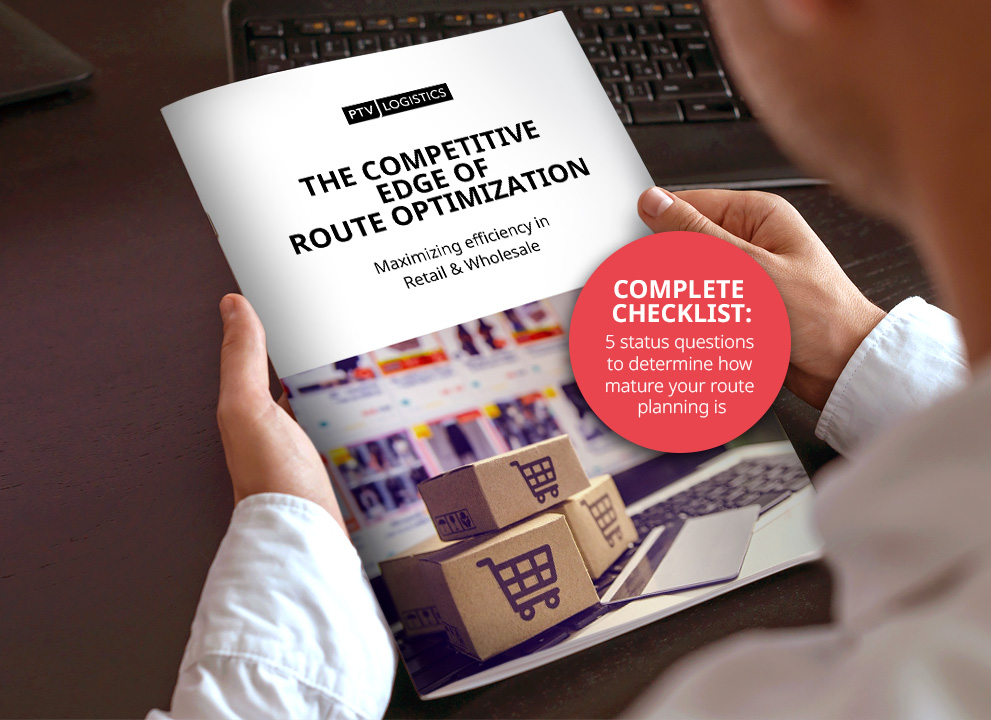Ensuring parcels get to the right place at the right time can be a challenge, particularly when factoring in large fleets of trucks, driver limitations and multiple stops. However, simply getting packages from A to B isn’t enough anymore. As the online retail space has grown, competition has increased. For retail and wholesale logistics providers to survive long term, they need to go above and beyond simply delivering a package to an address and focus on offering a great customer experience. This is quickly becoming the only way to stand out against competitors whose focus is on saving money rather than improving quality.
And keeping customers happy doesn’t automatically mean costs increase, instead it can come with savings if done the right way. So, here are some of the top customer complaints and some ways you can resolve them.
“My order takes too long to arrive.”
One of the most important factors in a purchase decision is how fast they’ll receive their order. As more companies offer same-day or next-day delivery, consumers now expect to receive their purchases quickly. A 2022 survey showed that 62% of customers expected their orders to arrive within three business days with free shipping. Any brands who can bring the shipping time down stand to win big with customers.
One way to achieve this is using transport planning technology that quickly adapts to fluctuations in demand. Instead of relying on manual planning or static order fulfilment (having a fixed delivery schedule week-on-week), dynamic route planning technology that uses AI to quickly re-plan routes and increase efficiency means wholesalers can meet stock requirements of retailers more quickly, who in turn can ship to customers faster. While the initial investment in this type of software might be high, it’s likely that you can make up for this in costs saved due to better route planning and increased revenues from returning customers.
DOWNLOAD WHITEPAPER
Unlock Faster Deliveries Without Higher Costs.
Want to deliver faster without increasing costs? Our whitepaper dives into how dynamic route planning technology can help you reduce delivery times, save on logistics expenses, and retain more customers.
“The delivery times aren’t convenient.”
As a customer, one of the most annoying things a logistics provider can do is tell you that your parcel could arrive at any time on a given day. It might be easier for you to plan deliveries by allowing maximum flexibility to factor in delays, but it’s very inconvenient for the recipient who has to be available all day. It can also have a knock-on effect on your business too. The larger the time window, the higher chance of a missed delivery as people need to continue with their daily schedules, which means additional costs on you to re-plan the delivery for the following day.
Instead, it makes sense to reduce the time windows and allow customers to choose the one most convenient for them. Whilst it makes route design more complex by adding an extra constraint into the planning, with advanced route optimisation technology this can be factored in easily.
Looking to provide more convenient delivery times? Discover how cloud-based route optimization algorithms makes it simple here.
“My parcel didn’t arrive when it was supposed to.”
Planning to deliver at a specific time is one thing, however disruptions on the route and unexpected traffic can make that difficult in practice. This is, again, annoying for customers as they will need to change their plans.
Even if the disruptions are unavoidable, they can be minimised by using real-time visibility technology. The tool will alert you and the customer to any potential delays as soon as they arise and provide a new, more accurate ETA, so that plans can be adapted to reduce any negative impact. This also helps to solve another common customer complaint: a lack of visibility and communication around their delivery. By enabling customers to track their parcels in real-time, they can be reassured that it’s on the way and not stuck in a warehouse somewhere.
In addition to alerting customers of disruption, route optimisation technology can take the live traffic data and re-plan the route on the go to reduce the chance of further delays.
“The package was damaged on arrival.”
Receiving damaged goods or the wrong item can be very frustrating, even more so if there is no easy way to report this. Better route planning could help reduce accidents when handling packages on the go as trucks can be loaded according to the route, ensuring the parcel needed at each stop is always the one closest to the doors. This should reduce the need for the driver to move packages around to access the correct one at each stop and give more time to unload them safely. Likewise, planning routes well in advance gives those in the warehouse more time to pick the correct items.
And in the cases when items do arrive damaged, technology such as electronic proof of delivery (ePOD) can help to speed up the claims process. With this, any issues can be reported on the spot and sent immediately to central office to process rather than relying on physical paperwork being submitted by the driver at the end of the delivery round. Not only does this take time, but it can be open to human error if paperwork is lost or completed incorrectly.
“Returning items is expensive and complicated.”
In the same way that customers expect receiving items to be easy, quick and cheap they also expect to be able to return them just as easily. In reality, it’s often not the case.
For logistics providers (and retailers), it can be very costly to collect items as it requires an additional stop with no additional revenue resulting from it. One of the most efficient, and therefore cost-effective, ways to organise this is to plan reverse logistics into each delivery round. Rather than planning a separate route to collect returned items, which would require an additional truck and driver, you can reduce costs by combining deliveries with collections, and this also ensures the truck is never driving empty miles.
Although this adds complexity to planning, optimisation software the uses advanced AI algorithms can factor in these requirements easily.
Put customers front and centre for better business
Focusing on customer experience might sound obvious if you’re offering a service that depends on demand, but so often businesses put profit margins above everything else at the detriment of good service. But, it doesn’t have to be either or.
As we’ve highlighted above, so many of the most common customer complaints can be solved by using the right technology, whether that’s a route planning, optimisation or real-time tracking tool, which also help your business run more efficiently. By investing in the right software you can keep costs down and increase revenues by offering a service that customers will come back for, again and again. As competition for business increases, this is the only way to stand out.

